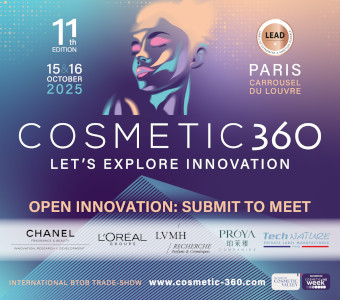
The global medical aesthetics market is projected to reach USD 17.07 billion by 2023 from USD10.30 billion in 2018. “Botox and fillers” remains the leading category in terms of value (51.5%) in 2019. That’s an estimated increase of 9.2% yearly until 2023. On the other hand, invasive surgical treatments have fallen by 14.5% over the past year.
Trend 1: Artificial intelligence, virtual reality and aesthetics
Artificial intelligence and the integration of robotics propelling the industry to another level, was the biggest message coming from the lectures and the exhibitions. Robotics and AI with visions systems are increasingly going to be assisting in aesthetic procedures.
The highlight of the show, no doubt, was the world premiere of NextMotion, a ‘world first’ AI managed injector robot. A robotic arm equipped with a vision system and artificial intelligence that allows it to autonomously deliver the treatment plans decided by doctors. Combined with an electronic syringe it can steadily deliver calibrated doses to the thousand of a millimetre, with a very high accuracy, both in the positioning of the points as in the injected volumes.
Virtual reality was another strong theme. The days of patients having to visit a doctor face to face in a clinic setting are not a necessity. Increasingly, consultations will be delivered in a virtual world model with a new type of clinician, the “virtualist” through web-based portals. It is already effective at skincheckonline.com: patients can upload selfies of themselves and the doctor uses AI to acts as its eyes.
In cosmeceuticals, AI for skincare is growing. Universkin provides skincare customized by doctors using AI. Using an AI digital assistant and a very thorough dermatological questionnaire which is verified by image analysis, Universkin is able to create a personalized treatment plan.
Trend 2: Androgynous and gender neutral
It’s no longer about being masculine or feminine. There is a move away from extreme femininity and masculinity, in favour of an androgynous look. The male metrosexual is fading away, as male patients are becoming increasingly interested in women’s procedures. Chin augmentation and jaw reshaping, high cheekbones, smooth skin, a thin and straight nose and a plump and luscious mouth are the new desires from men. A drive for female features that are slightly masculine are the new desire for women. A slightly masculine jaw and a straight nose. It’s like having a tattoo. They want to express themselves.
Trend 3: MDR (Medical Device Regulation) and the evolving requirements across Europe
A recent overhaul in regulations in Europe has resulted in more rigorous scrutiny of medical device manufacturers and greater emphasis on patient safety. Specifically, the new regulation will demand that manufacturers of medical devices for sale within the EU must adhere to strict guidelines to ensure that their products are safe to use and ensure patient safety.
Trend 4: Alteration, not rejuvenation
A growth in procedures to challenge typical beauty norms was another strong theme at IMCAS. Recreating looks and giving patients the freedom to do that. A perfect example of this was Strōma Medical that uses lasers to disintegrate eye pigments, turning dark eyes into blue ones, although it turns out more of a green. But there is no way to reverse it as its permanent. The Strōma technology is not yet commercially available and is subject to more clinical trials.
Trend 5: Aesthetic procedures are for everyone
The brand messaging and imagery displayed by aesthetic brands at IMCAS was all about redefining attitudes, towards the accessibility and acceptability of aesthetic procedures in people across all ages and genders.
|
In summary Consumer demand continues to drive non-invasive procedures to the top of all aesthetic procedures. The Aesthetic market is fully part of the mainstream, and appeals to all genders and ages. Androgynous looks are coming. No gender stereotypes anymore, as males are attracted to female features and women are attracted to male features. The use of technology will play an increasingly significant role across all areas of aesthetic medicine, but will not replace doctors. It will be used as an essential tool to improve patients safety and outcomes. Regulations within the industry are much needed, and we can expect that similar regulations to the ones that we see coming to Europe will expand globally in the not too distant future. With other global regions following the MDR lead. |



































